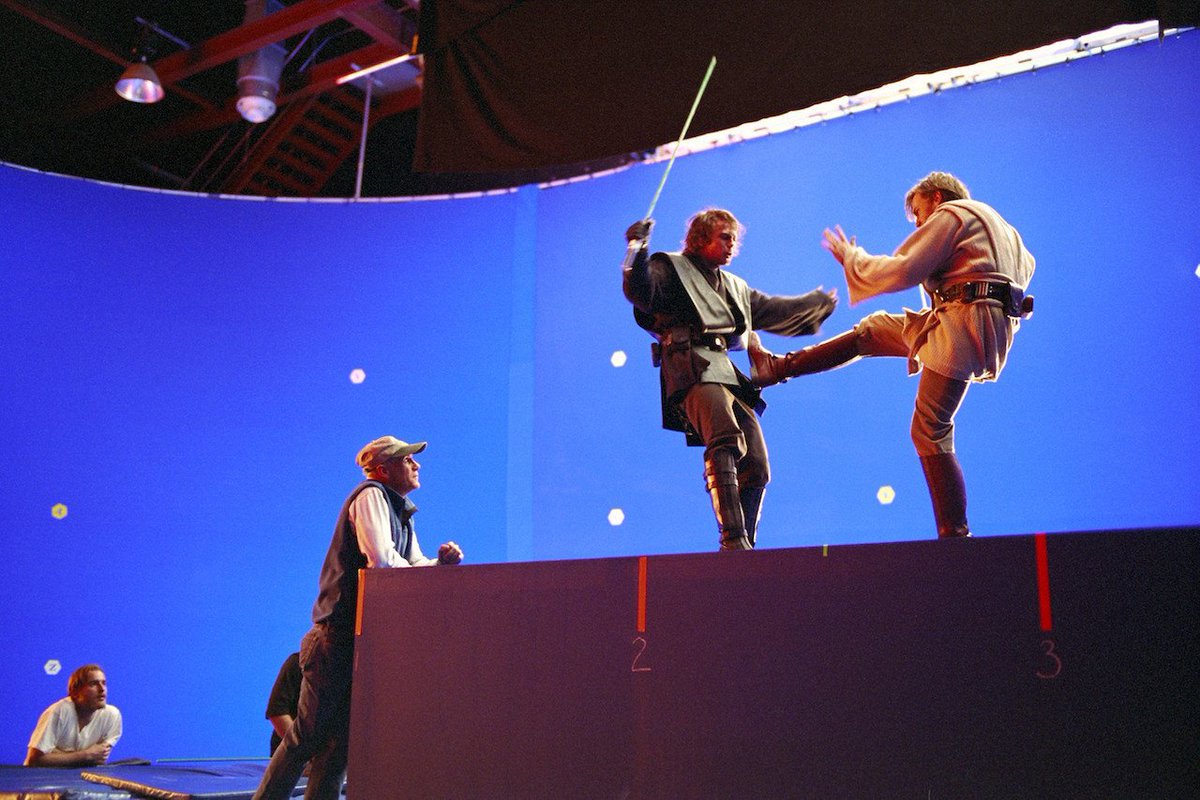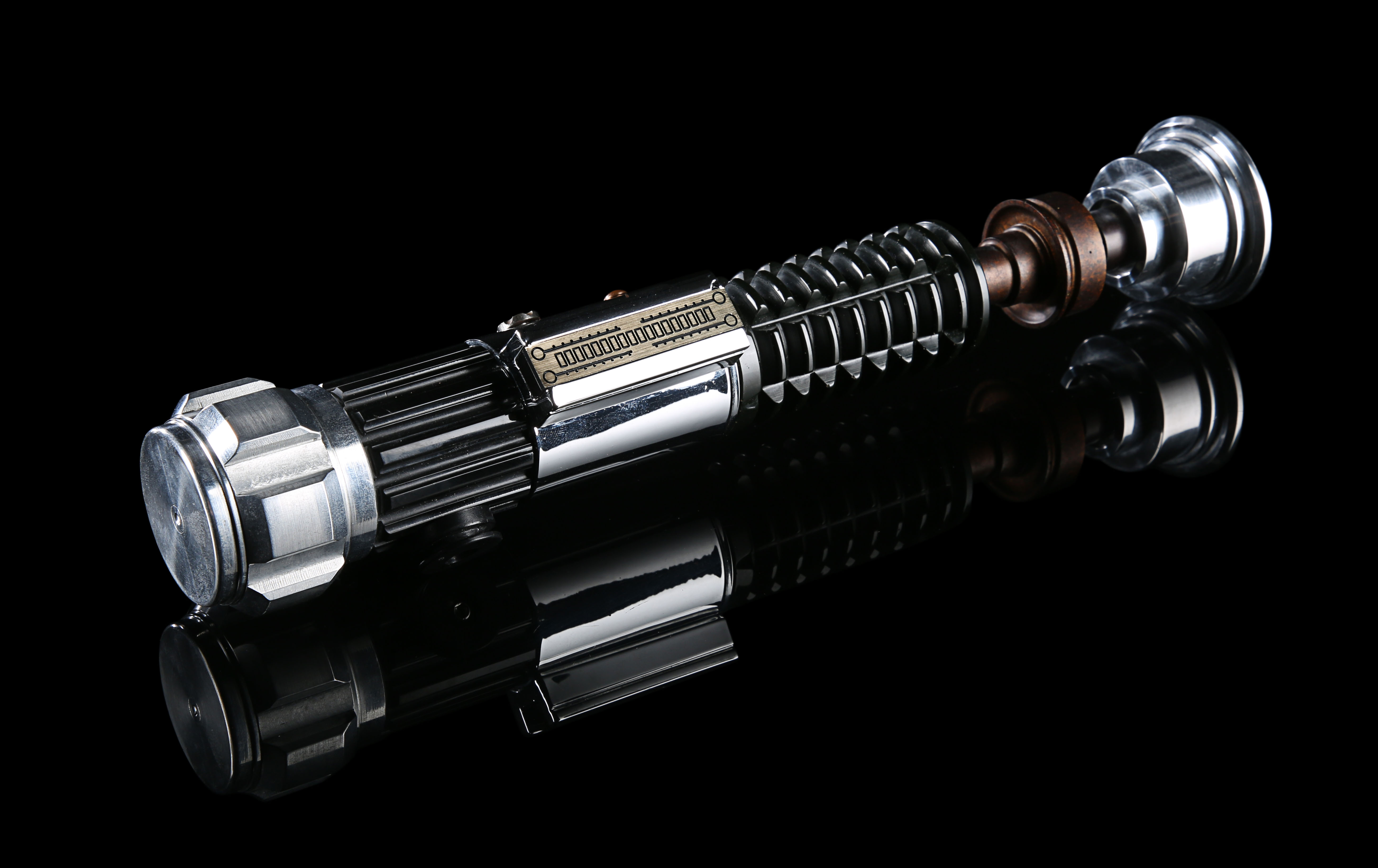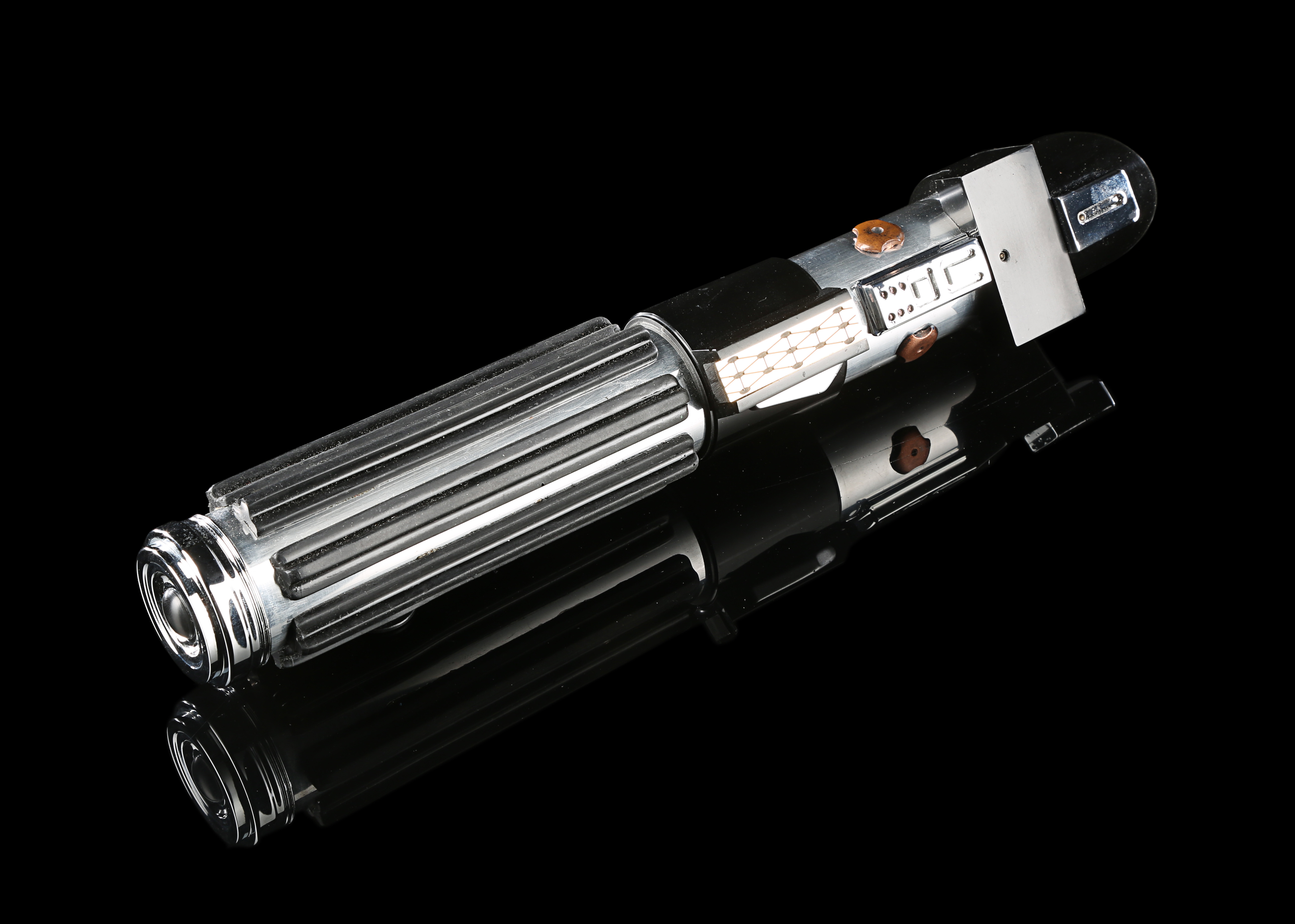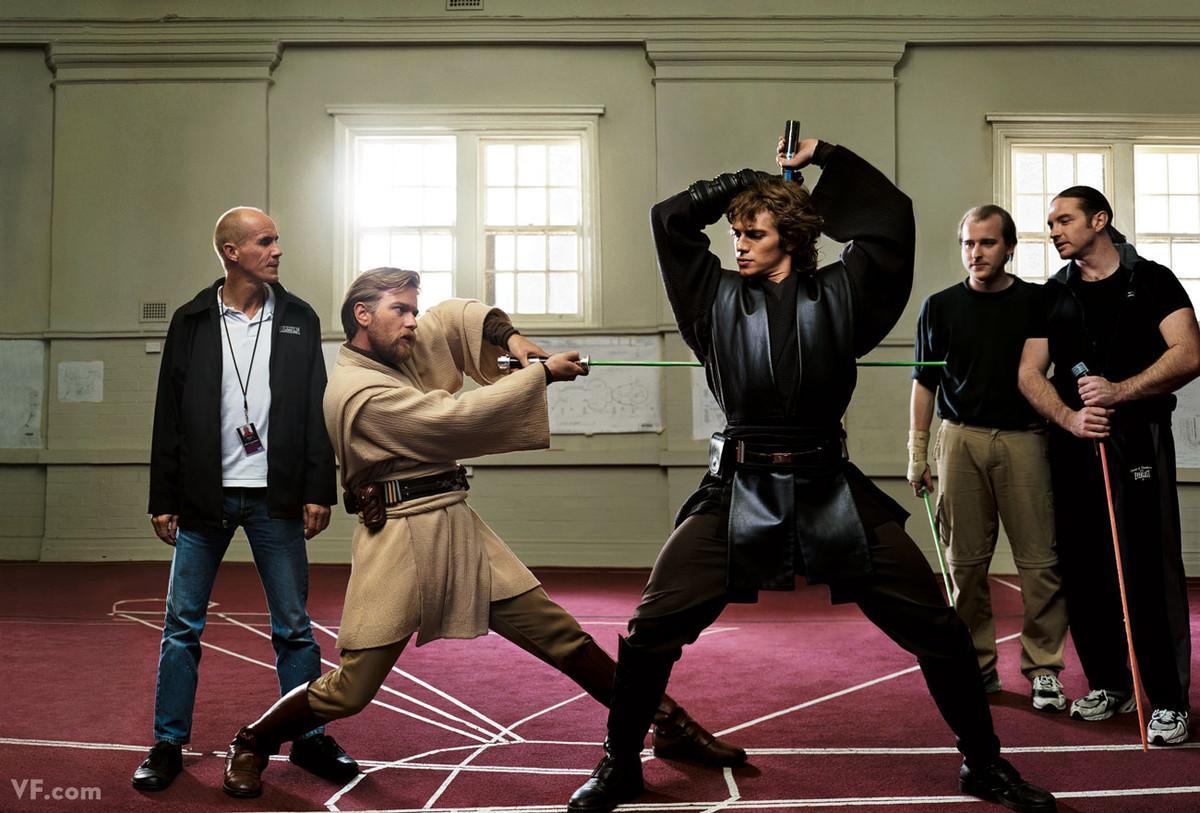Star Wars stunt coordinator and sword master Nick Gillard reflects on his days with the Jedi of the Old Republic.
When George Lucas decided to return to his galaxy far, far away, to an era when the Jedi were at their peak, he knew the lightsaber battles had to be unsurpassable. Which is why he recruited veteran stunt coordinator and performer Nick Gillard to be the prequel trilogy’s sword master and fight choreographer.

Image courtesy of Reddit
Since quitting military school and running away with the circus (for real!), Gillard had carved out a stellar reputation as a stuntman on such action-packed features as the Bond movies and 1991’s Robin Hood: Prince of Thieves. But Lucas knew him best from being Mark Hamill’s stunt double of choice on Return of the Jedi, and a stunt performer on Indiana Jones and the Last Crusade (in which you can spot Gillard as the tank crewman hit by the periscope).
Together with Lucas, Gillard brought the Jedi Order to spectacular life in the Star Wars prequel trilogy and crafted arguably the greatest lightsaber battles in the entire Skywalker saga, from The Phantom Menace’s “Duel of the Fates” to the climactic Obi-Wan (Ewan McGregor) versus Darth Vader (Hayden Christensen) showdown in Revenge of the Sith. Gillard kept the hero lightsabers used in that battle, and has consigned both these rare and sought-after items to Propstore’s upcoming Entertainment Memorabilia Live Auction.

Image courtesy of Twitter
Here, he talks to us about designing duels, working with Jedi, and what it was like to actually handle those elegant weapons from a more civilized age…
Why do you think lightsabers are so popular, to this day?
Because they’re the most iconic prop in the movie industry, and there are only a few hero ones that have actually been used by the actors in the movies.

Lot #689 – Obi-Wan Kenobi’s (Ewan McGregor) Hero Lightsaber, Star Wars: Revenge of the Sith (2005)
As a sword master, what is it like to handle and work with a lightsaber?
It’s interesting. In my job, you get to handle all kinds of props. Whether it’s a lightsaber or a Lamborghini Countach, it’s exactly the same: you have to treat it as a prop. Because the moment you start treating it any other way, you won’t use it right. When you smash cars up, people are like, “Oh my God, how can you do that!?” But I don’t even think about it, you know? I just get in it and crash it. And it’s the same with the lightsaber. You just sort the fight out and smash it!

Image courtesy of Pinterest
Wasn’t it quite challenging, during the course of making the Star Wars prequels, because they would often break?
Well, yes. When we started on The Phantom Menace, the stunt lightsabers were made of aluminum and they would bend and break all the time. But by Episode III we didn’t break any. We had it down by that stage. We used Duralumin blades. The hero ones were turned on a lathe, made out of a single piece of solid metal, and the stunt blades were formed from them out of plastic.
Would you have used a hero blade like the pair you’ve consigned for this auction in an actual fight scene?
Yeah, definitely. When you go in close, you have to go to the hero version. It’s the same with guns and knives. Whenever it’s the actor, once you get in close, you use the hero version quite a lot.

Lot #688 – Darth Vader’s (Hayden Christensen) Hero Lightsaber, Star Wars: Revenge of the Sith (2005)
Looking back at the prequel trilogy, how did you approach the creation of a fighting style for these Republic-era Jedi?
We hadn’t seen Jedi, young Jedi in their prime, fighting before. So George [Lucas] said, “Can you come up with a style that’s going to work for this?” He wanted everything in Star Wars – not just the fighting, but also props, costumes, things like that – to have a familiarity to it. So you have to base it on something people know. If it’s a gun, he’d reject some super-smooth space-gun for something with a bit of a flintlock thing on it. There had to be something you recognize. So I based the fighting style on kendo, but I also tried to use every cool sword style that there was, and tried to marry them all together.
How physically demanding was it for the actors during these lightsaber duels?
Oh, incredibly demanding. It was the most demanding thing they did on those films. They would normally come for six-to-eight weeks prior to shooting and rehearse for at least four hours a day – although Hayden [Christensen] would often do eight hours every day! Ewan [McGregor] also put in a lot of time on all three films. He’s fabulous to work with: brave, smart, a natural athlete, and he wants to get it right.
Who impressed you most out of Ewan and Hayden, in terms of their aptitude with a lightsaber?
You couldn’t really split them. They’re both slightly different in the way they move, but perfect for fighting each other. I couldn’t say one’s better than the other one. One’s faster, but one’s quicker… If that makes sense? [Laughs]
That must have worked quite well for the final confrontation between them in Revenge of the Sith, where they had to be evenly matched.
Yeah, exactly. I mean, you can do that in the choreography, but they do move differently. That sequence was the fight of all fights. It took three weeks just to write it, eight weeks to rehearse, and it traveled over a kilometer!

Image courtesy of Vanity Fair
What’s your favorite overall memory of making the Star Wars prequels?
My favorite overall memory is working with some of the most talented people in the business. It rubs off on you!
Do you still follow Star Wars today? Have you been watching The Mandalorian, for example?
I really like the look of The Mandalorian, but so far have resisted watching it, as I’m bound to think I could have made it better. The action especially…
Discover a whole host of true movie history now over at propstore.com/liveauction
Don’t forget to follow us on Twitter and Facebook. And remember, you can explore so much more at our archive and see the extensive range of film and TV items we have for sale and auction over at propstore.com!
